|
Clash of Titans
Games featuring a future Hall of Fame coach on each sideline. November 27, 1924: Tulane @ LSU
Clark Shaughnessy vs Mike Donahue Construction of a $100,000 LSU football stadium began in January 1924 as part of a totally new campus three miles south of Baton Rouge. "Tiger Stadium" was rushed to completion so the Tigers could use it for the final game against Tulane on Thanksgiving. The concrete stands could not be completed in time. So the unfinished sections were roped off, and temporary bleachers were set up to accommodate a crowd of 17,682.
Few roadways suitable for automobiles connected downtown Baton Rouge to the new campus. So a shuttle train ran between the city and the stadium. Also a great many fans went in buggies and wagons. Meanwhile, three special trains transported Tulane fans from New Orleans. The crowd began to arrive as early as 11 AM for the 2:30 kickoff.
Another first took place that day. The LSU Physics department set up an experimental radio station, KFGC, on the downtown campus. As explained in the State Times Advocate, "As the plays are made at the new stadium, special wires carry them to the physics building where they are repeated into a broadcasting microfone [sic] and thence through the transmitting apparatus, and finally all over the state." Fans who picked up the broadcast were asked to send a card to the station so that the number of listeners could be estimated.
Clark Shaughnessy's ninth Green Wave squad had enjoyed a better season than Mike Donahue's second LSU team. Tulane lost only to Mississippi A&M 14-6 in seven games. Shaughnessy would later become the "Father of the T Formation," but at Tulane he used the formation he learned at his alma mater, the "Minnesota Shift," from legendary coach "Doc" Williams. An offshoot of the single wing, the shift consisted of a sudden switch into a new offensive formation right before the ball was snapped. The purpose was to keep the defense off balance and disguise the intended points of attack.
The Tigers had started the season 4-0 before losing their next three games. A 40-0 rout of Louisiana Normal (today's Northwestern State) improved the record to 5-3. LSU fans hoped their underdog Tigers could upset the Greenies to christen the new stadium. Coach Donahue gave his team some new T formation plays to be used when LSU got favorable field position.
With no dressing rooms in the incomplete stadium, the Tigers dressed at their regular quarters on the old campus. Then they traveled by taxicabs to the agricultural building that had been completed on the new campus. The Tulane players dressed aboard their special train parked on a siding near the stadium.
  Two views of Tiger Stadium on opening day Early morning showers abated, and the sun came out by kickoff. An overflow crowd estimated at 20,000 was the largest in Louisiana football history. A Big Ten referee was imported for the game when the two schools could not agree on a Southern Conference official.
LSU coach Mike Donahue put in a new offensive look for the game—a T-formation off his patented line-divide formation. He told QB Ike Carriere to save the play until the Tigers got into Tulane territory.
 Tulane-LSU action (Tulane University Jambalaya Yearbook Class of 1925) Green Wave Takes Advantage of Fumble
After a scoreless first quarter, the Green Wave got the first break of the game. Horace Talbot blocked Norman Stevens' punt, and Harry Gamble fell on the ball on the LSU 18. The Tigers had set their defense to stop RHB "Brother" Brown, and they were successful in that effort. So Tulane's quarterback (signal-caller) Lester Lautenschlaeger alternated carries with LHB Charles "Peggy" Flournoy to the one, from where Flournoy scored on fourth down. Lautenschlaeger tried to drop-kick the extra point but missed by inches when the wind caught the ball. Tulane 6 LSU 0
 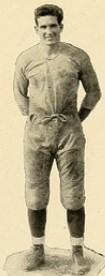 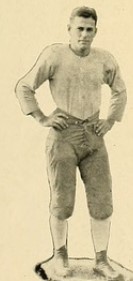 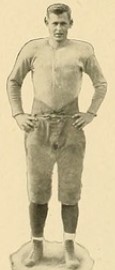 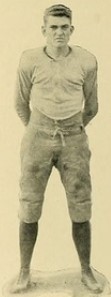 L-R: Horace Talbot, Brother Brown, Lester Lautenshclaeger, Peggy Flournoy (Tulane University Jambalaya Yearbook Class of 1925) Tulane Goal Line Stand
LSU implemented Donahue's new plays when they received a weak punt on Tulane's 45. The new formation surprised the Greenies, and the Tigers marched inside the 1y line. But the Tulane line fought off the giant Tiger line and took over on downs when FB Fritz Spencer stumbled taking the handoff and was smothered short of the goal. Flournoy punted Tulane out of danger, and LSU would never come close to scoring again.
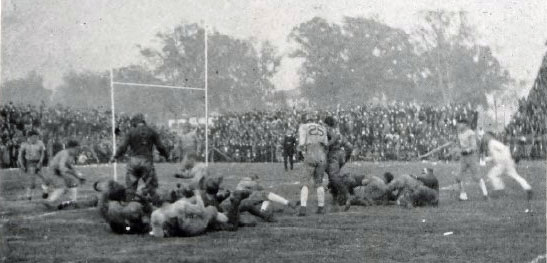 FB Jack Clay carries the ball to the Tulane 5. Notice the helmetless LSU players. (LSU Gumbo Yearbook Class of 1925) 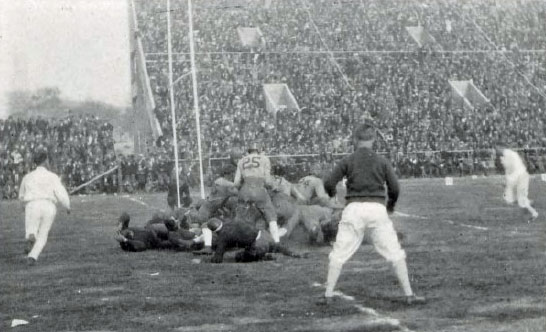 Tulane stops LSU on the goal line. (LSU Gumbo Yearbook Class of 1925) Visitors Extend Lead
Before the half ended, the Greenies got another break when Eddie Morgan jumped high and plucked a pass from Stevens intended for Ike Carriere to give Tulane possession on the LSU 35. However, only 45 seconds were left. So Lautenschlaeger took the snap and shot a pass over the heads of the defense toward Doc Wilson. The ball seemed headed out of bounds until Wilson leaped like a high jumper, caught the ball, and came down just inside the boundary on the three before falling out of bounds. Lester kept the next snap himself and drove through the line into the end zone. This time his dropkick sailed between the uprights to make it 13-0.
"Shaughnessy made some adjustments at halftime," recalled Lautenschlaeger. "He had LB Harvey Wilson dive over the LSU center before Ike could make a handoff."
With Tulane content to play it safe, the second half produced no further scoring. The Green Wave earned their eighth victory, the most in school history, against only one loss to earn the nickname "Wonder Team of the South."
Reference
The Green Wave: Tulane University Football, George Sweeney (1980) |